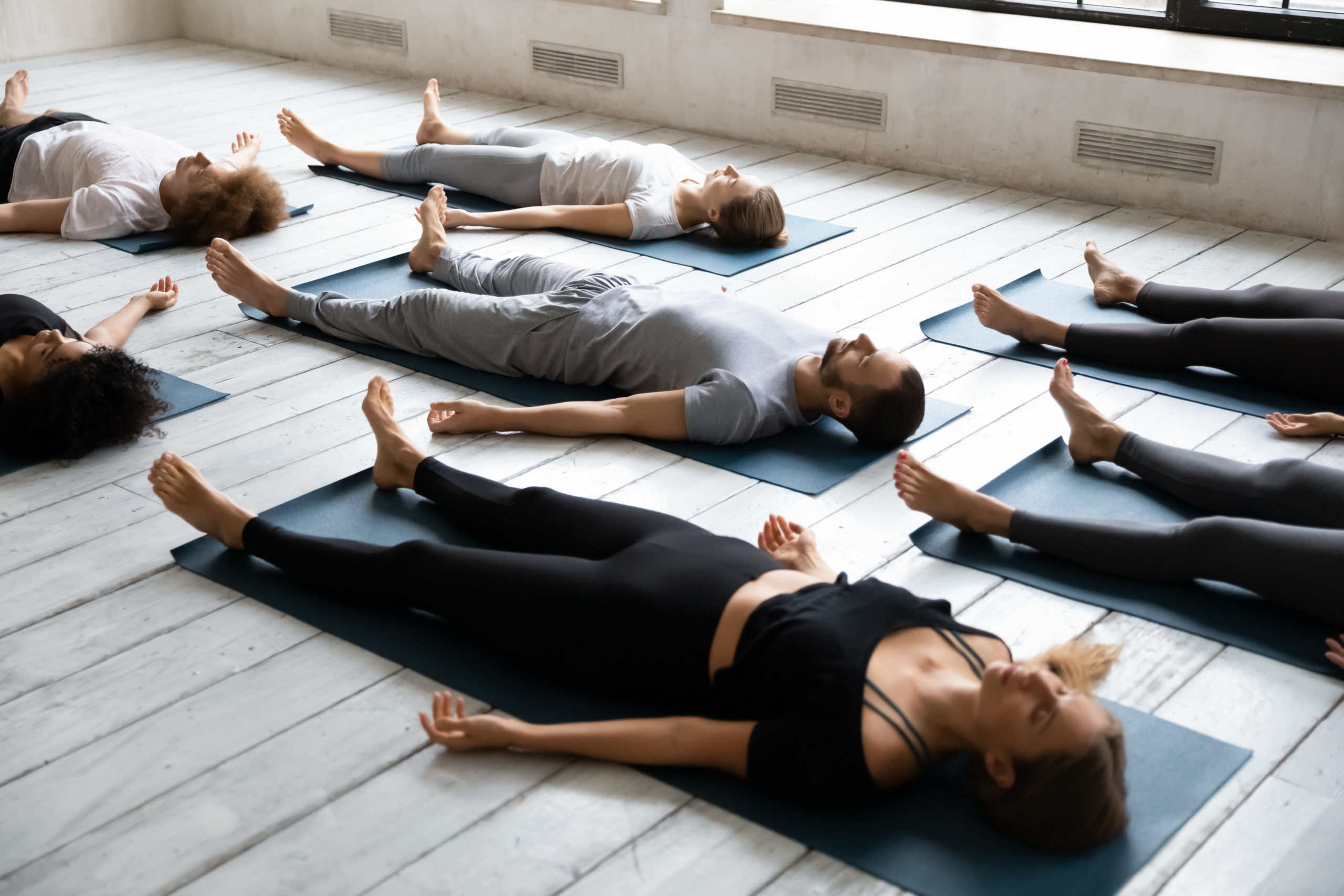Imagine yourself floating, as if weightless, through calm waters. Now imagine you’re suspended somewhere in that place of conscious recognition just before you fall asleep – that sensation of complete physical surrender and of total relaxation is what Yoga Nidra is all about.
What is Yoga Nidra?
Yoga Nidra (pronounced yoh-gah nee-drah) is also known as ‘Yogic Sleep’. It is an ancient yogic practice of healing and relaxation facilitated and induced by guided meditation.
The aim is to calm your mind as you move down through the progressive brainwave states where there is naturally less and less thought, ultimately coming to rest in a profoundly deep state of consciousness. Body – breath awareness techniques are used to help us move from the thinking mind into the feeling body, which helps us to sink into a deeply relaxed state of being. The body does this naturally when we go to bed at night, but Yoga Nidra combines the deep relaxation of sleep with a state of alert awareness.
The heightened state of awareness achieved through the practice of Yoga Nidra is not the only aim. By accessing the pranamaya kosha (energy sheath) through the breath the practice unblocks the channels (or nadi) through which prana (energy) flows through us. The free flow of prana through the body allows the body to heal itself.
Standard Yoga Nidra sessions last between 15 minutes and 1 hour, although advanced practitioners have been known to practice for much longer. There is some evidence that an hour of Nidra is equivalent to several hours of ordinary sleep. Since Yoga Nidra is a very specialised form of meditation, not all yoga teachers are trained to lead it, so sessions must be run by a qualified Yoga Nidra guide.
Benefits of Yoga Nidra
The state of mind induced by this method of deep relaxation takes the practitioner to a place somewhere between being awake and asleep. It helps to release physical tension and slows the breath, which in turn slows the heartbeat down enough to establish a calm body and mind. The benefits are heightened after an asana class, as it helps to cool and moderate the body’s natural temperature as well as conserving the energy from the movement practice. It also relaxes the entire anatomical system.
Many benefits have been reported by practitioners after doing regular Yoga Nidra and according to research done by clinical psychologist and yogic researcher Richard Miller, PhD, of The Integrative Restorative Institute (iRest) the following responses to the practice have been observed:
- Reduced anxiety and stress
- Better, less interrupted sleep and reduced symptoms of insomnia
- Relief in some chronic pain conditions
- Profound physical and spiritual experiences
- Better, more positive outlook
- Increase in the ability to stay focused
- Healing of emotional imbalances
What Can I Expect?
Traditionally, the following consecutive steps are used during the Yoga Nidra process:
Step 1 – Preparation of the Body for Relaxation
Yoga Nidra is done in savasana. Lying on your back, place your arms away from the body, palms facing up. Feet should be about hip-distance apart. Let the toes fall out towards the side.
Quick tip: If you experience any discomfort in the lower back then place a bolster, cushion or rolled-up yoga mat under the knees to release those muscles.
Step 2 – Introduction of the Sankalpa
Before you start in earnest it’s good to set a positive intention, also called Sankalpa. Repeating the Sankalpa helps to ground the affirmation in the practitioner’s subconscious, although there is an art to creating a good one.
Step 3 – Body Awareness
Next, you may be instructed to bring your focus to the points of contact with the back of the body. Often, a full guided body scan is introduced where you are asked to bring your awareness to each individual body part for a moment before moving on to the next. Sometimes this is also approached by tensing each body part in turn and then releasing it fully.
Step 4 – Breath Awareness
The practice will often start with your guide inviting you to take note of any faraway sounds, outside of the room, for instance. Then moving on to noticing sounds within the room. After that, you’ll be directed to notice the sound of your own breath.
Step 5 – Visualisation/Imagination
It is also common to be given a number to count back from with the instruction that, if you lose count, you just need to start again. Suggested visualisations can often be a scene of serene, natural beauty or it may be an invitation to imagine energy or light flowing through the body.
Step 6 – Reiteration of the Sankalpa
You will be reminded to bring your awareness to your Sankalpa just before you go into deep relaxation as well as at the end of this phase of the practice.
Step 7 – Reorientation to a Normal State
At the end of the session you will often be guided back up through the layers of consciousness, bringing your awareness back in turn to your breath, sounds and your body before ending the session.
A Quick How-To At Home
While classes may be returning to normal soon, we’re still in a limbo situation. Now is a great time to try Yoga Nidra in the comfort of your own home. Here’s a quick guideline on how to get the best experience out of your Yoga Nidra at home:
- Choose a Yoga Nidra free MP3 download, YouTube recording, or head to our guide to the best FREE Yoga Nidra sessions online.
- Find a quiet space in your home where you will not be interrupted and turn your phone off.
- Roll out your yoga mat, and settle into savasana.
- Make sure you are warm enough or will be as the body will start to cool down considerably. It’s also important to check you are feeling symmetrical and that you can comfortably stay still for the entire practice.
- Press play.
- Close your eyes and follow the instructions.
We regularly run specialist Yoga Nidra courses – you can view all upcoming dates for workshops, CPDs and specialist courses here.












